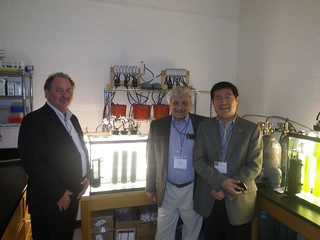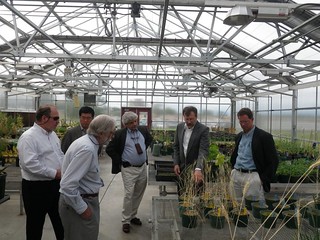Take 10 minutes of your day with these videos of algae capturing greenhouse gases from a power plant. The resulting biomass can be used to manufacture everything from fuel to feed to fertilizer.
The videos, from the University of Kentucky Center for Applied Energy Research (CAER), describe an ongoing demonstration of an algae-based system that recycles carbon dioxide from the flue gases of a coal-fired power plant. The project is capturing CO2 from Duke Energy’s East Bend Station in Northern Kentucky.
These videos give a quick tutorial on how algae can be integrated into power production:
Check out the University of Kentucky’s news service for more details.





